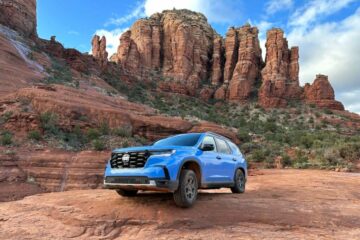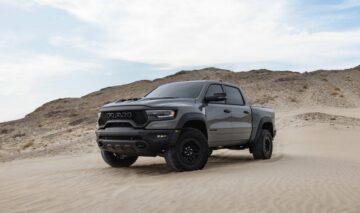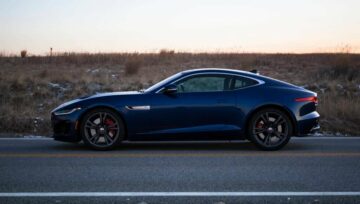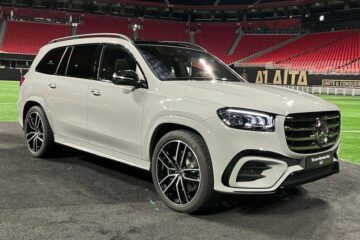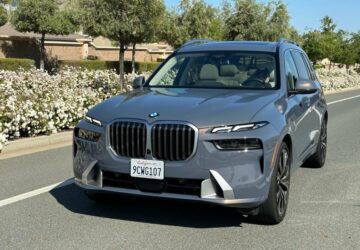Acura’s recent victory at the Rolex 24 Hours of Daytona should be a harbinger for a brand looking to regain momentum as Honda’s premium brand.
Certainly, the automaker is looking to regain its lost mojo with the reintroduction of the Acura Integra, which builds on the sporty image of its MDX and RDX crossovers and could help reinvigorate its moribund sedan line-up.
With that victory as a backdrop, we recently caught with Dave Marek, Acura Global Creative Director at the Rolex 24 Hour. Here’s what he had to say.
The Detroit Bureau.com: How is Acura design changing? What is the direction? What are you trying to do?
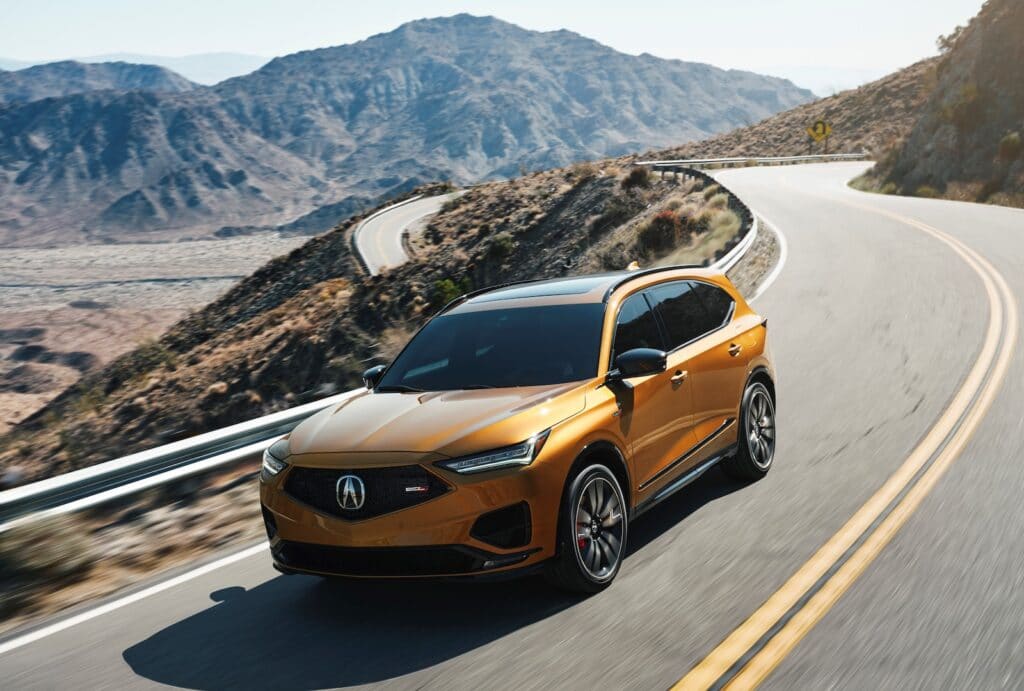
Dave Marek: Well, obviously electrification is a big part. So, I like where we’re going, where we’ve been going. I think the precision crafted performance, the ability for me to direct people by saying that needs to be more performance, more aggressive, more sporty, more and more, more, more. But I think what that means is, you know, even surface development that used to be careful, now they’re much more dramatic or more emotional. You know, we call that like the alluring modern edge, but you have sections that are deeper and catch more light or more shadow and it just looks more aggressive. And, there’s like a pyramid of styling. So, you have proportion, which is like the foundation. And proportion is changing with electrification for sure. Overhangs are different, you have safety issues, but you don’t have the same safety issues with pedestrian safety and things like that.
But I think that the second part of the pyramid is the identity, the surfacing the face, the center break, the diamond pentagon and things like that; you know what makes an Acura an Acura. And then the third tier is the detail. So, the lighting; lighting has become quite an identifier. So, moving forward with technology and with electrification, the lighting becomes much more playful or more interesting. Because, you know, with technology if you know, I don’t know if you saw the Precision Concept, So, we still have diamonds, but they’re not, they’re not air intakes, they’re lights. So, I think that kind of entertainment, when suddenly the buyer purchases the car and he gets up to it and he or she is welcomed (by) the lighting, the sounds, the five senses that go into both interior and exterior.
Our need to still (must) be performance thinking and that feeling of the visceral part of racing. I tried to make sure that people don’t think it’s too much. You know, let’s push the envelope as much as we can. And the mothership is Honda — so, it’s kind of like, we don’t want to overpromise or we don’t want people to think we’re better than we are.
TDB: I wouldn’t say timid, I would say conservative. And that’s always been the case.
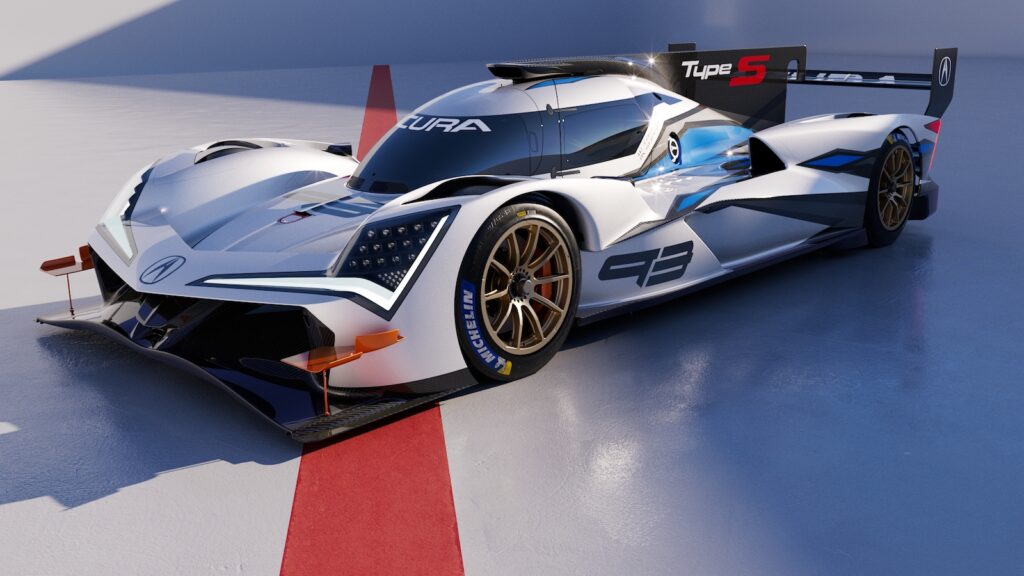
DM: It’s our culture; totally our culture. We have to be authentic, which is the greatest and I love that. But we can also, be authentic with racing. So, you have to get everybody to say “look, we can do this.” I’ll take the heat if it’s bad and I will. I just don’t want to take heat for not doing something good enough.
TDB: I certainly applaud the direction that you’re taking because I think Acura design got too careful. And certainly, your involvement with racing provides a natural template on where to go.
DM: Exactly. It’s kind of like, the cars we’re doing right now — we did the GTP car in our studio — that are tricky. And we did it like a project. So, we had the show car going, we had the racecar going. We had this ZDX going and we had future products going. And we were doing it through COVID mainly.
TDB: Are there a couple of models in your mind or even concepts that are quintessential Acura.
DM: The PC-1 in my mind is that. It’s the roadmap we’ve used; it fed into the RDX. It was really the first one we used from that, and then the new MDX. That car has that lean-and-mean kind of feel. And so does a race car.
And there’s a lot of people in Honda who are huge, huge race guys. But I’m surprised when there’s not. Some weren’t. So, I would say, “you got to make it like mean and nasty. It should dominate. It should scare people when it comes up behind them on the track.” So, they got that, and they started to do that. Then I said, “Ok, let’s start putting that into the production cars; you guys get too elegant with some of the production cars. Don’t forget where we’re coming from” and that’s the PC-1.
TDB: Do you think at some point, Acura kind of lost its way styling-wise for most of its products? Initially, the Integra and Legend were lean, elegant and sporty. Yeah, because it seems like some of that that essence was lost.
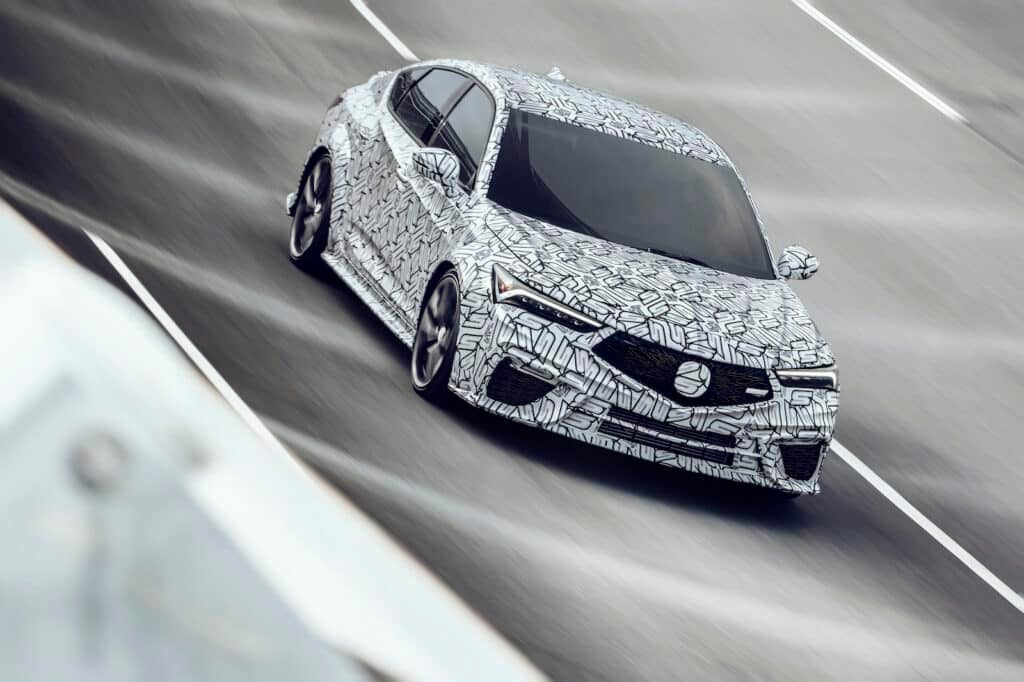
DM: You know, my corporate speak would be, “no, we were always great.” But the truth is yeah, of course. Look at the Insight. I mean, you think about that, we were first and nobody remembers that car, that’s just the way it is. And so, we do that a lot. We are either way ahead of the game or weird. And I think what happened was with the Legend and Integra is that they were so, cool, and then we started to get careful. And then what you do is you’re trying to get back to what that was. But there’s a lot of cooks and there’s a lot of people.
One of the best things from that era, like 2014, is that they made a decision to make a global director of Honda and a global director of Acura, and then above that was an executive. And so, they made me Acura. So, that was 2015 or 2016. And the NSX was already going, but we massaged it and stuff. I think at that point, I remember saying, “look, I’m A Honda guy, I don’t want to do Acura.” But then I realized the challenge. And they said, “look, we need you to do it. Basically, it’s an American car. We sell it in China, but its roots are in America, it was born in America, you have to do it.”
And so, I said, “if I do it, you need to let me do it. If it’s bad, it’s my fault. If it’s good, I’ll give everybody credit, but I don’t want you to second guess everything I’m doing. Let me try and let’s see what happens and if it’s good, then I can hang out. If it’s not, I get it. We’ll think of something else. But if you keep bringing up your opinion in a meeting about you something you don’t know shit about, like styling, but you’re telling me, you got to stop that.”
And at that time, though the evaluation process, everybody had a say in styling. And then they get to me and say, “Ok, what do you think?” And I say, “I think you’re all stupid. Here’s why we’re doing this, and you want more chrome, you don’t want any chrome.” You know, stuff like that. I said, “here’s what we’re going to do. We’re going to make this and I’m pretty sure I have faith that it’s going to be cool. So, let’s just do that.”
Then we did the PC-2 and it paved the way for the executives to look at that and go, “Oh. Wow. We’ve never done something like this before.” And we’ve done an NSX we get it you know, but always, it was careful. And, you know, it’s still not there. But you know, the platform is the platform. And you know, I’m really happy with the current MDX because that we did some things with the track and wheels. And it’s not as much as I would have liked, but it’s enough to put us in a different category in the public eye. I think that’s because the surfacing is more aggressive, but the proportion of it is just right it’s not dorky or it’s Honda-like; it’s more premium. It’s not just a big wheel and tire; all that stuff is in there.
TDB: How challenging was it to do an Integra again?
DM: Pretty Challenging.

TDB: I imagine it’s challenging because it has to live up to expectations are beyond what the car was.
DM: Exactly. And it was never going to be good enough; I can guarantee that. We were going to do it and we’re going to do it because we know what we want it to be and we’ll make it go. We knew at the time that we were going to do a Type S, and you know, nobody else did. But yeah, there’s going to be people like that and that’s OK.
TDB: Did the new design go far enough in your opinion?
DM: I would say no, because I understand the limitations that went into it. But I think what that means to me is the styling cues didn’t go far enough. It’s like, let’s have bigger wheels and tires, make it wider, let’s have over fenders like a GT3. And there were all these things in my head. And then, you know, reality sets in, and I do this all the time. In the studio, it’s like the sky is falling because we have to raise the roof or something. And instead of bitching, just put it in and let’s live with it for a little bit and I’ll fight for it if we look at it and it’s bad. But if we can get it to feel right, let’s come back three weeks from now and decide if it’s bad or not. Let’s look, let’s all calm down and see what’s going to happen.
TDB: David, thank you for your time today.
DM: Thank you.
- SEO Powered Content & PR Distribution. Get Amplified Today.
- Platoblockchain. Web3 Metaverse Intelligence. Knowledge Amplified. Access Here.
- Source: https://www.thedetroitbureau.com/2023/02/qa-dave-marek-acura-global-creative-director/
- 2014
- 2016
- 2023
- 2024
- a
- ability
- About
- above
- aggressive
- ahead
- AIR
- All
- alongside
- already
- always
- america
- American
- and
- Authentic
- back
- backdrop
- Bad
- Basically
- because
- become
- becomes
- before
- behind
- BEST
- Better
- Beyond
- Big
- bigger
- Bit
- born
- brand
- Break
- Bringing
- builds
- Bureau
- call
- Can Get
- car
- careful
- cars
- case
- Catch
- Category
- caught
- Center
- certainly
- challenge
- challenging
- changing
- China
- Chrome
- COM
- come
- coming
- concept
- concepts
- conservative
- Cool
- Corporate
- could
- Couple
- course
- Covid
- Creative
- credit
- Culture
- Current
- Dave
- debuted
- decision
- deeper
- Design
- designed
- detail
- Development
- Diamond
- DID
- different
- direct
- direction
- Director
- doing
- dominate
- Dont
- down
- dramatic
- Edge
- either
- enough
- Entertainment
- Era
- essence
- evaluation
- Even
- everything
- executive
- executives
- expectations
- eye
- Face
- Falling
- Fed
- fight
- First
- Forward
- Foundation
- from
- future
- game
- get
- Give
- Global
- Go
- going
- good
- great
- greatest
- guarantee
- Guy
- Hang
- happen
- happened
- happens
- happy
- head
- help
- honored
- HOURS
- How
- HTTPS
- huge
- I’LL
- identifier
- Identity
- image
- in
- initially
- insight
- instead
- interesting
- interior
- involvement
- issues
- IT
- January
- Keep
- Kind
- Know
- light
- Lighting
- limitations
- little
- live
- Look
- looking
- LOOKS
- Lot
- love
- made
- make
- MAKES
- max-width
- mdx
- means
- meeting
- mind
- models
- Modern
- mojo
- Momentum
- more
- most
- moving
- Natural
- Need
- needs
- New
- North
- ONE
- Opinion
- part
- pentagon
- People
- performance
- platform
- plato
- Plato Data Intelligence
- PlatoData
- Point
- Precision
- Premium
- pretty
- process
- Production
- Products
- project
- provides
- public
- purchases
- Push
- put
- Putting
- Pyramid
- quintessential
- Race
- racing
- raise
- reach
- Reality
- realized
- recent
- recently
- remember
- roadmap
- rolex
- roof
- Safety
- Said
- same
- Second
- sections
- seems
- sell
- Sets
- Shadow
- should
- show
- So
- some
- something
- speak
- start
- started
- Still
- Stop
- studio
- Surface
- surprised
- Take
- taking
- Technology
- template
- The
- There.
- things
- Think
- Thinking
- Thinks
- Third
- three
- Through
- tier
- time
- tire
- tires
- to
- today
- too
- TOTALLY
- track
- understand
- us
- Vehicles
- Weeks
- welcomed
- What
- What is
- Wheel
- which
- WHO
- wider
- will
- would
- WoW
- year
- Your
- zephyrnet


